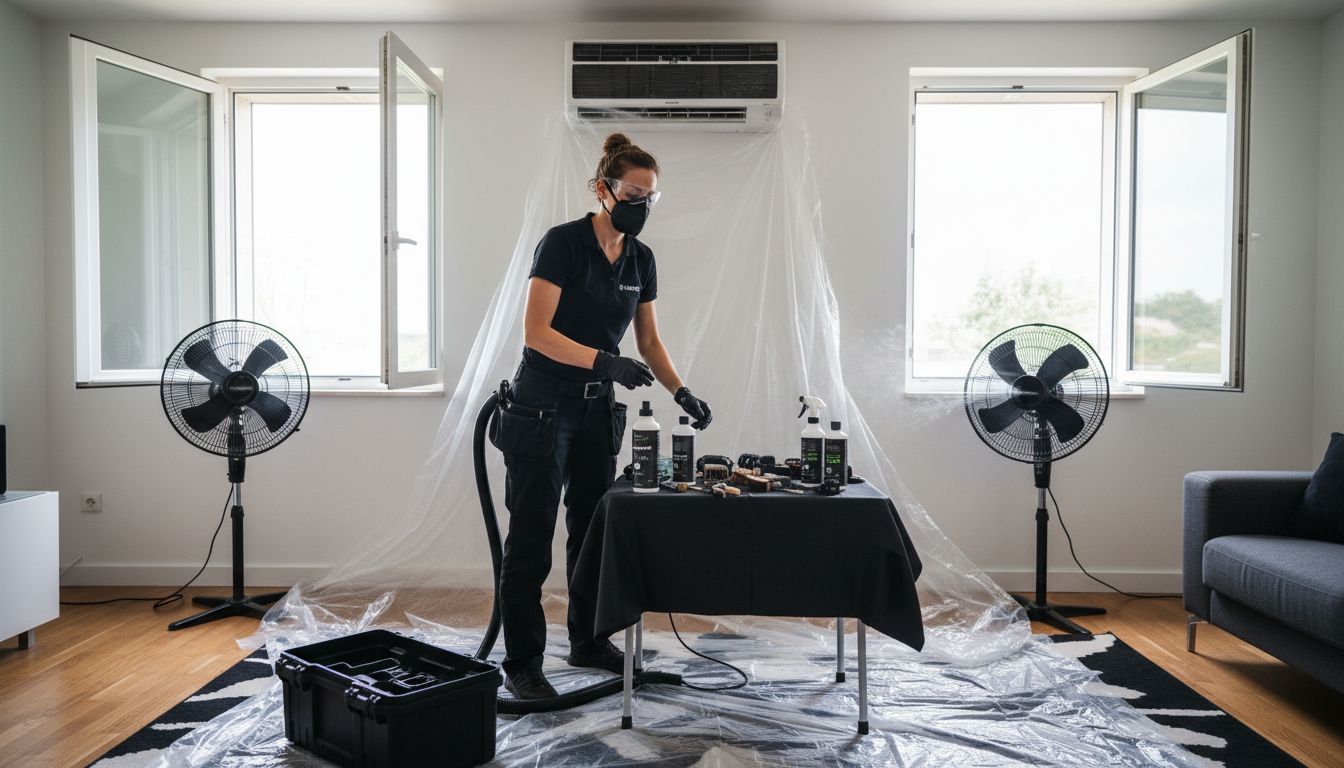
How to Get Rid of Mold in Air Conditioner Naturally
How to Get Rid of Mold in Air Conditioner Naturally
Contents
- 1 How to Get Rid of Mold in Air Conditioner Naturally
- 1.1 Table of Contents
- 1.2 Quick Summary
- 1.3 Step 1: Prepare your air conditioner and workspace
- 1.4 Step 2: Inspect and identify mold-affected components
- 1.5 Step 3: Remove and clean accessible AC parts thoroughly
- 1.6 Step 4: Apply natural, non-toxic mold disinfectants
- 1.7 Step 5: Reassemble and test air conditioner performance
- 1.8 Step 6: Monitor for recurring mold and improve AC hygiene
- 1.9 Breathe Easier by Tackling Mold in Your Air Conditioner Today
- 1.10 Frequently Asked Questions
- 1.10.0.1 How can I naturally get rid of mold in my air conditioner?
- 1.10.0.2 What are the signs that my air conditioner has mold?
- 1.10.0.3 How do I prepare my workspace for cleaning mold in my AC?
- 1.10.0.4 What natural cleaning solutions can I use for mold removal?
- 1.10.0.5 How can I prevent mold from returning in my air conditioner?
- 1.10.0.6 How often should I inspect my air conditioning system for mold?
- 1.11 Recommended
Did you know that over 45 percent of homes develop mold in HVAC systems at some point? Hidden mold in your air conditioner can trigger allergies and lower air quality without you noticing. A few simple steps can make a major difference and help protect your health. By preparing your workspace, inspecting every part, and inviting natural solutions, you gain control over mold before it spreads.
Table of Contents
- Step 1: Prepare Your Air Conditioner And Workspace
- Step 2: Inspect And Identify Mold-Affected Components
- Step 3: Remove And Clean Accessible AC Parts Thoroughly
- Step 4: Apply Natural, Non-Toxic Mold Disinfectants
- Step 5: Reassemble And Test Air Conditioner Performance
- Step 6: Monitor For Recurring Mold And Improve AC Hygiene
Quick Summary
| Key Point | Explanation |
|---|---|
| 1. Create a well-ventilated workspace | Ensure good air circulation to minimize exposure to mold spores during cleaning. Open windows and use fans for airflow. |
| 2. Inspect thoroughly for mold | Conduct a detailed visual inspection of accessible AC parts to identify locations of mold growth accurately. Pay attention to moisture-prone areas. |
| 3. Use natural disinfectants | Apply eco-friendly cleaning solutions like white vinegar or hydrogen peroxide to eliminate mold effectively without harmful chemicals. |
| 4. Reassemble carefully and test | Methodically reattach all components after cleaning and ensure the air conditioner operates efficiently and free of unusual noises. |
| 5. Monitor humidity levels regularly | Maintain indoor humidity between 30-60% and perform monthly inspections to prevent mold recurrence and ensure continued AC hygiene. |
Step 1: Prepare your air conditioner and workspace
Getting ready to tackle mold in your air conditioner requires careful preparation. This initial step is crucial for ensuring a safe and effective cleaning process that protects both your health and your HVAC system.
Start by creating a well-ventilated workspace that minimizes potential mold spore exposure. According to the Environmental Protection Agency (EPA), proper workspace preparation involves isolating the area to prevent cross-contamination and spreading of mold spores. Open windows and use fans to establish good air circulation while working.
Next, gather your protective equipment. You will need:
- Disposable gloves
- Safety goggles
- N95 respirator mask
- Protective clothing that can be easily washed
Before beginning any cleaning, turn off your air conditioning system completely. This prevents mold spores from circulating through the ductwork and reduces potential exposure during the cleaning process. As recommended by North Carolina State University’s Environmental Health and Safety guidelines, containment is key to limiting potential mold spread.
Pro Tip: Create a dedicated cleaning zone by laying down plastic sheeting around your work area to catch any potential debris and make cleanup easier.
Preparing your workspace thoroughly sets the foundation for a successful and safe mold remediation process. With the right precautions in place, you are now ready to move forward with cleaning your air conditioner and eliminating unwanted mold growth.
Step 2: Inspect and identify mold-affected components
Identifying the extent of mold growth in your air conditioner is a critical step in effective remediation. By carefully examining each component, you will map out the areas that require targeted cleaning and treatment.
Begin with a comprehensive visual inspection using a bright flashlight. According to the Environmental Protection Agency, carefully examine all accessible parts of your HVAC system, paying special attention to areas prone to moisture accumulation. Focus on vents, filters, drainage pans, and interior surfaces where condensation frequently builds up.
Look for telltale signs of mold growth:
- Musty or earthy odors
- Dark or discolored spots on surfaces
- White, green, or black fungal patches
- Visible moisture or condensation
- Unusual dampness around AC components
For a more precise assessment, consider using a moisture meter to detect hidden dampness that might not be immediately visible. Research from indoor environmental testing indicates that moisture levels above 60% create ideal conditions for mold proliferation.
Pro Tip: Take clear photographs of any mold spots you discover. These will help track the extent of growth and can be useful for professional assessment if needed.
Understanding the specific areas affected will help you develop a targeted approach to mold removal in your AC system.
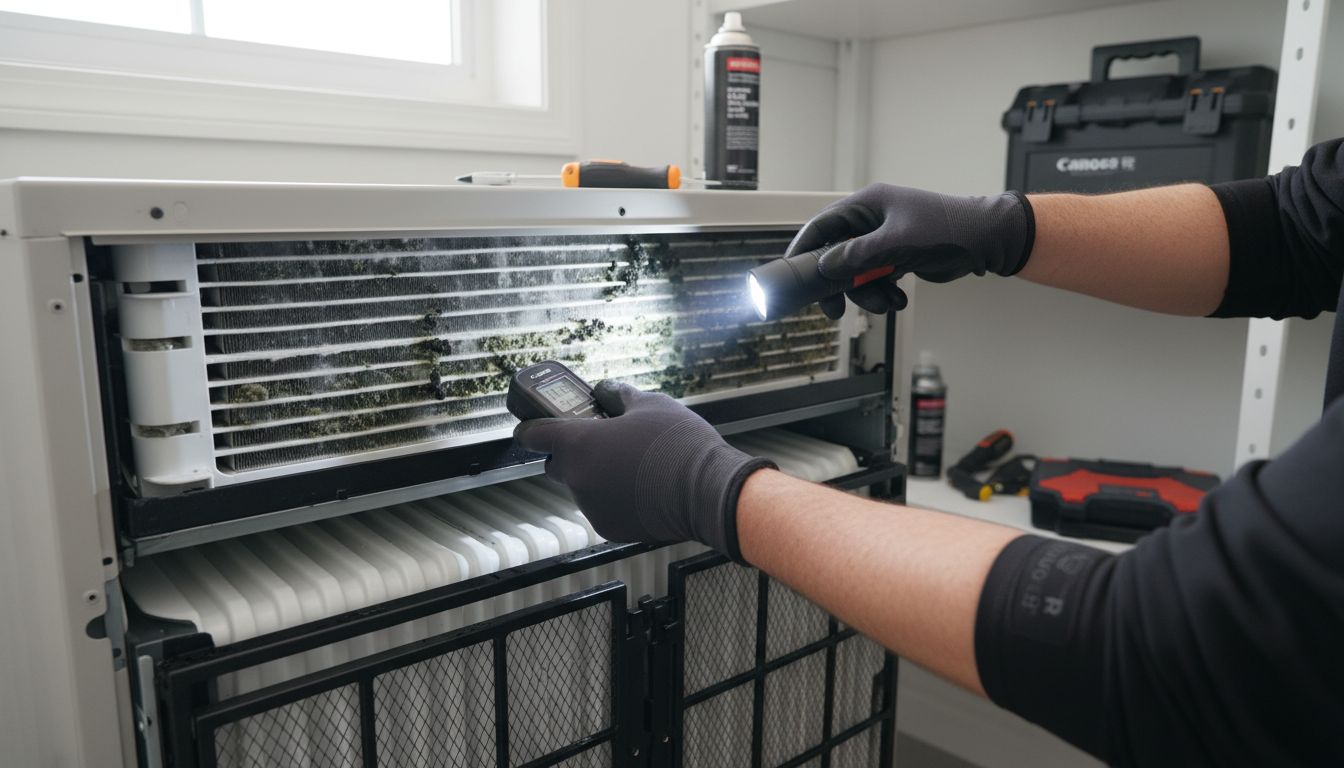
Step 3: Remove and clean accessible AC parts thoroughly
Cleaning mold from your air conditioner requires a systematic approach to ensure thorough removal and prevent future growth. This step will help you methodically disassemble and sanitize the most accessible components of your HVAC system.
According to the Environmental Protection Agency, the key to effective mold removal is using appropriate cleaning techniques for different surface types. Begin by carefully removing removable parts such as filters, vents, and drainage pans. These components often harbor significant mold growth and require special attention.
For non porous surfaces like metal or plastic components:
- Prepare a cleaning solution of mild detergent and warm water
- Use a soft cloth or sponge to wipe down surfaces thoroughly
- Pay extra attention to crevices and corners where mold tends to accumulate
- Rinse components with clean water to remove all cleaning solution
- Dry completely using clean towels or allow to air dry in a well ventilated area
Research from North Carolina State University highlights a critical point: porous materials that cannot be thoroughly cleaned should be replaced entirely. If filters or insulation show extensive mold growth, disposal is the safest option.
Pro Tip: Always wear protective gloves and a mask during cleaning to prevent direct contact with mold spores.
For comprehensive guidance on maintaining your AC system, check out our best practices for AC hygiene guide. Thorough cleaning sets the foundation for a mold free and efficiently functioning air conditioning system.
Step 4: Apply natural, non-toxic mold disinfectants
Naturally eliminating mold from your air conditioning system requires careful selection of safe and effective cleaning agents. This step focuses on using environmentally friendly solutions that effectively combat mold without introducing harmful chemicals into your indoor environment.
According to guidelines from the Environmental Protection Agency, cleaning mold effectively does not necessarily require harsh chemicals. Instead, you can rely on several natural and non toxic alternatives that are both safe and powerful.
Natural mold disinfectant options include:
Here’s a summary of effective natural mold disinfectants for AC cleaning:
| Disinfectant | How to Use | Main Benefits |
|---|---|---|
| White vinegar | Spray undiluted | Non-toxic Destroys spores |
| Hydrogen peroxide (3%) | Spray and let sit 10 min | Antimicrobial No fumes |
| Tea tree oil solution | Mix with water, spray | Broad-spectrum fungicide |
| Grapefruit seed extract | Dilute, spray on surfaces | Antibacterial Natural |
| Baking soda with water | Scrub or spray, rinse | Deodorizes Safe for most surfaces |
- White vinegar (undiluted)
- Hydrogen peroxide (3% concentration)
- Tea tree oil solution
- Grapefruit seed extract
- Baking soda mixed with water
For white vinegar application, pour undiluted white vinegar into a spray bottle and directly apply to mold affected surfaces. Let it sit for one hour before wiping clean. The acidic nature of vinegar helps destroy mold at its root while being completely non toxic.
Research from North Carolina State University emphasizes the importance of avoiding bleach or aggressive chemicals.
Natural solutions not only eliminate mold but also prevent potential respiratory irritation associated with harsh chemical treatments.
Pro Tip: Always test your natural solution on a small area first to ensure it does not damage the surface material.
Understand the risks of mold in your living space by checking out our guide on AC mold buildup risks in high end villas. Protecting your indoor environment starts with informed and careful mold management.
Step 5: Reassemble and test air conditioner performance
After thoroughly cleaning and disinfecting your air conditioning system, the final critical step is carefully reassembling components and verifying the unit operates smoothly. This process ensures all your hard work translates into optimal system performance and continued mold prevention.
According to guidelines from the Environmental Protection Agency, reassembly requires methodical attention to detail. Begin by reviewing the photographs or notes you took during disassembly to ensure each component returns to its original position.
Reassembly steps include:
- Replace cleaned filters
- Reattach drainage pans
- Secure vent covers
- Reconnect electrical connections
- Ensure all fasteners and clips are tightly secured
Research from North Carolina State University recommends a comprehensive system test after reassembly. Turn on the air conditioner and monitor its performance carefully. Listen for unusual sounds, check airflow consistency, and verify that cool air is being produced efficiently.
Pro Tip: Run the system for at least 15 minutes during initial testing to confirm full operational integrity.
For additional insights into maintaining your AC system at peak performance, explore our tutorial on expert AC coil cleaning in Dubai. Regular maintenance is key to preventing future mold growth and ensuring a healthy indoor environment.
Step 6: Monitor for recurring mold and improve AC hygiene
Preventing future mold growth requires ongoing attention and proactive maintenance of your air conditioning system. This final step focuses on developing a strategic approach to monitoring and maintaining a clean healthy indoor environment.
According to the Environmental Protection Agency, maintaining indoor humidity levels between 30 and 60 percent is crucial for mold prevention. Invest in a digital humidity meter to track moisture levels consistently and take immediate action when readings approach problematic ranges.
Key monitoring strategies include:
- Conduct monthly visual inspections of AC components
- Check for condensation or moisture accumulation
- Verify air filters are clean and replaced regularly
- Monitor indoor humidity levels
- Ensure proper ventilation in all living spaces
Research from Oregon State University Extension recommends using a moisture meter as an early warning system. By keeping indoor humidity below 50 percent, you create an environment that significantly reduces the likelihood of mold proliferation.
Pro Tip: Schedule quarterly AC maintenance to catch potential issues before they develop into significant problems.
For comprehensive insights into maintaining a healthy indoor environment, explore our guide on AC hygiene for health conscious families. Consistent monitoring and preventive care are your best defense against recurring mold growth.
Breathe Easier by Tackling Mold in Your Air Conditioner Today
Mold growth in your air conditioner is more than just an eyesore or unpleasant odor. It can trigger allergies, cause respiratory issues, and compromise the comfort of your entire home or villa. The natural methods you read about provide an effective first line of defense, but achieving thorough removal and lasting prevention requires expert care. Mold hides deeply within coils, ducts, and drainage areas where DIY solutions cannot reach safely or completely.
Turn to Saniservice, Dubai’s leading professional AC cleaning and disinfection experts, for a science-backed solution to eliminate mold and restore healthy indoor air. Our NADCA-certified technicians use hospital-grade, chemical-free biosanitisers that go beyond surface cleaning. With advanced microbiology support and proven protocols, we ensure your entire AC system is mold-free and operating at peak efficiency. Don’t wait until mold affects your health and your AC’s lifespan. Visit Saniservice now to schedule your comprehensive, Swiss-quality AC mold removal and disinfection service.
To learn more about protecting your indoor environment, explore our expert AC coil cleaning service and discover best practices for AC hygiene that keep your home safe and comfortable all year round.
Frequently Asked Questions
How can I naturally get rid of mold in my air conditioner?
To naturally get rid of mold in your air conditioner, use a solution of white vinegar or hydrogen peroxide. Spray undiluted white vinegar directly onto affected surfaces and let it sit for an hour before wiping clean.
What are the signs that my air conditioner has mold?
Signs of mold in your air conditioner include musty odors, dark spots on surfaces, visible moisture, and unusual dampness. Inspect these areas regularly to spot potential mold growth early.
How do I prepare my workspace for cleaning mold in my AC?
Prepare your workspace by ensuring good ventilation—open windows and use fans to circulate air. Additionally, lay down plastic sheeting around your work area to catch debris and minimize exposure to mold spores.
What natural cleaning solutions can I use for mold removal?
Natural cleaning solutions effective for mold removal include undiluted white vinegar, hydrogen peroxide, tea tree oil, and baking soda mixed with water. Apply these solutions directly onto moldy areas and scrub as necessary.
How can I prevent mold from returning in my air conditioner?
Prevent mold from returning by maintaining indoor humidity levels below 50% and checking your AC system regularly for moisture accumulation. Schedule monthly inspections and replace filters as needed to ensure a mold-free environment.
How often should I inspect my air conditioning system for mold?
Inspect your air conditioning system for mold at least once a month, particularly during humid seasons. Regular checks help you identify and address any moisture buildup before it leads to significant mold growth.


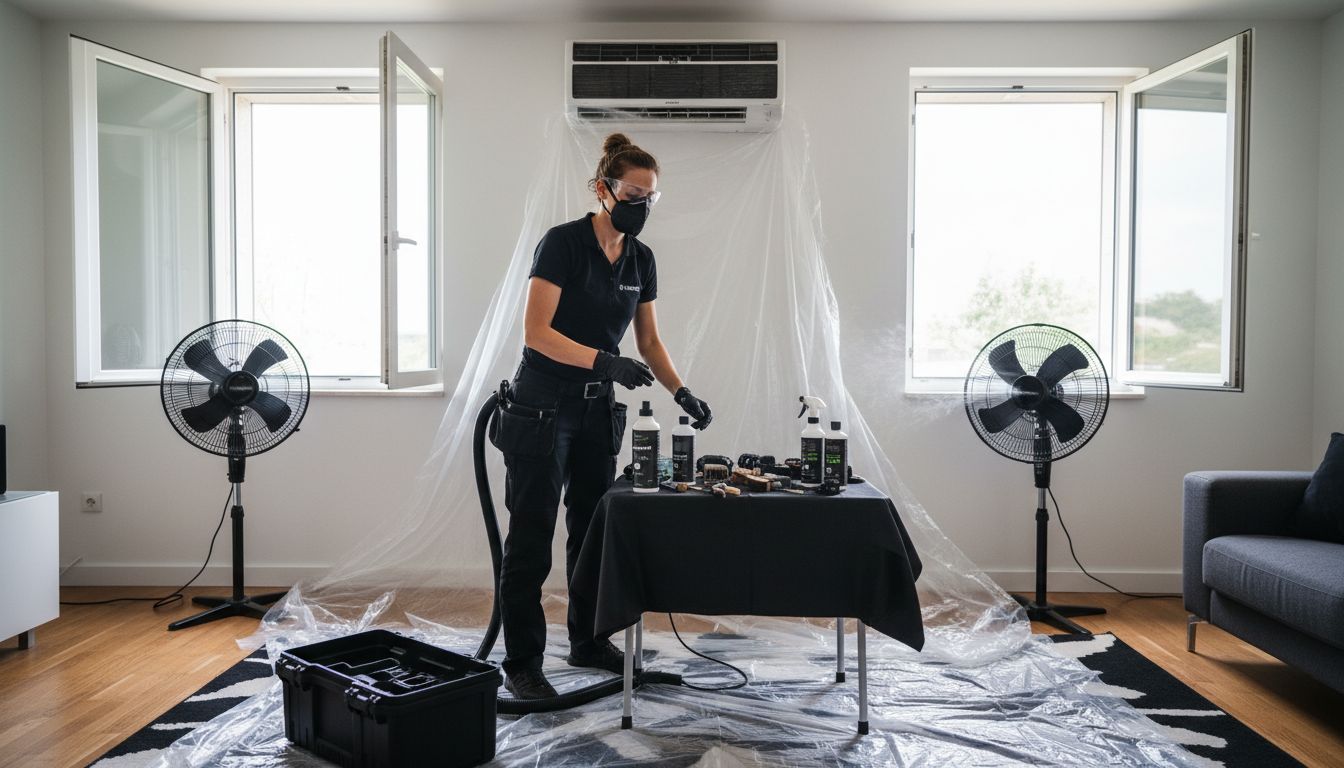
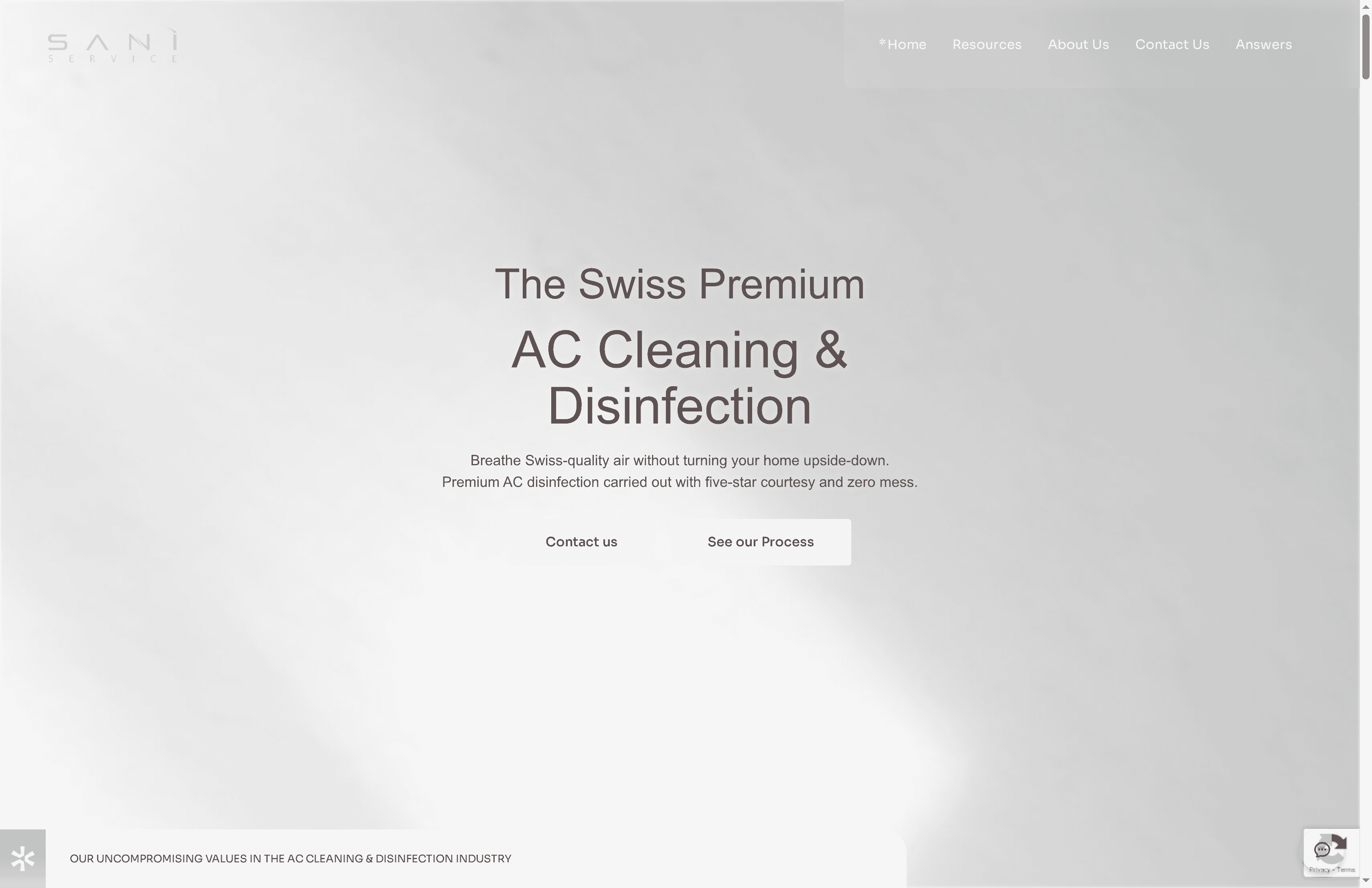
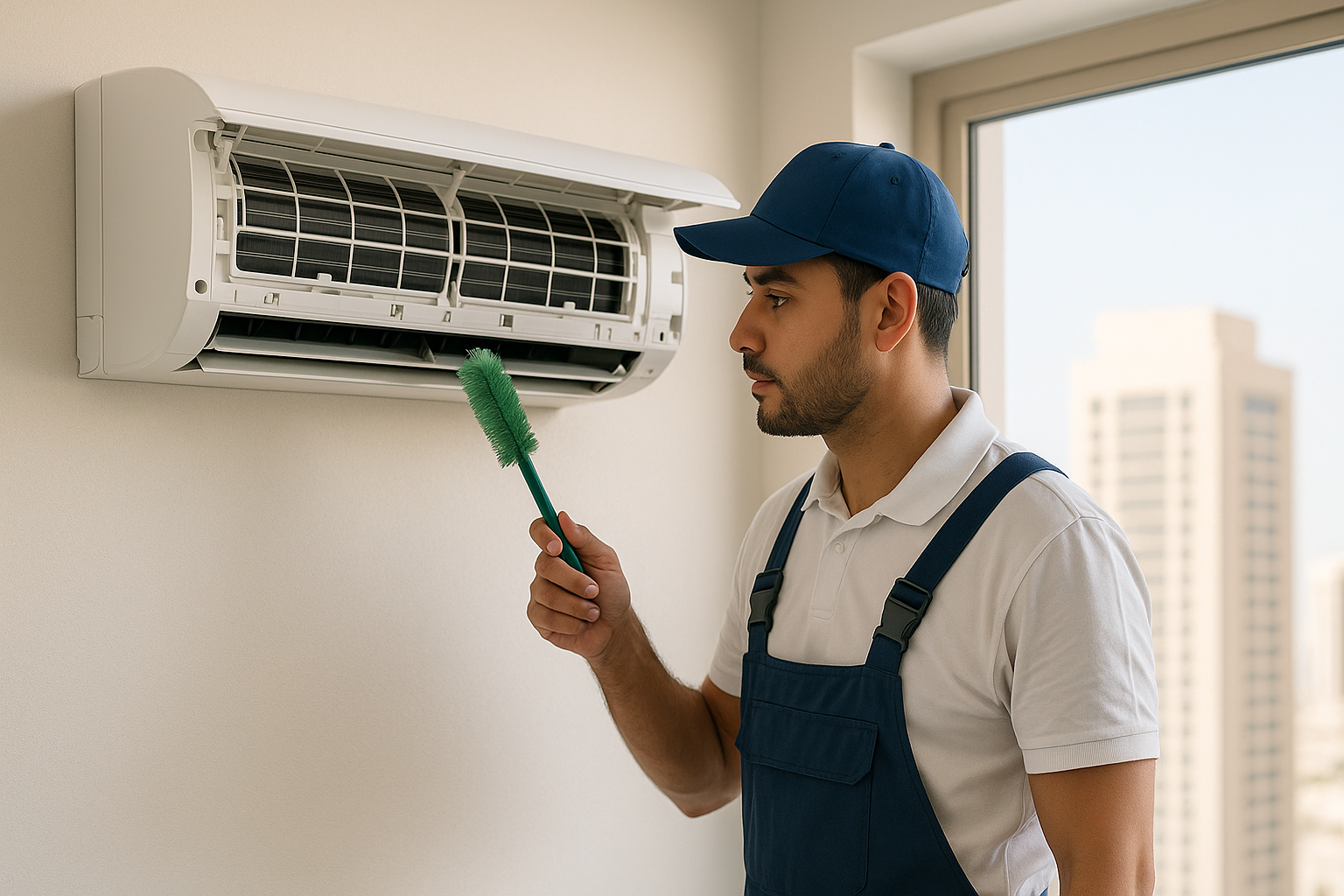
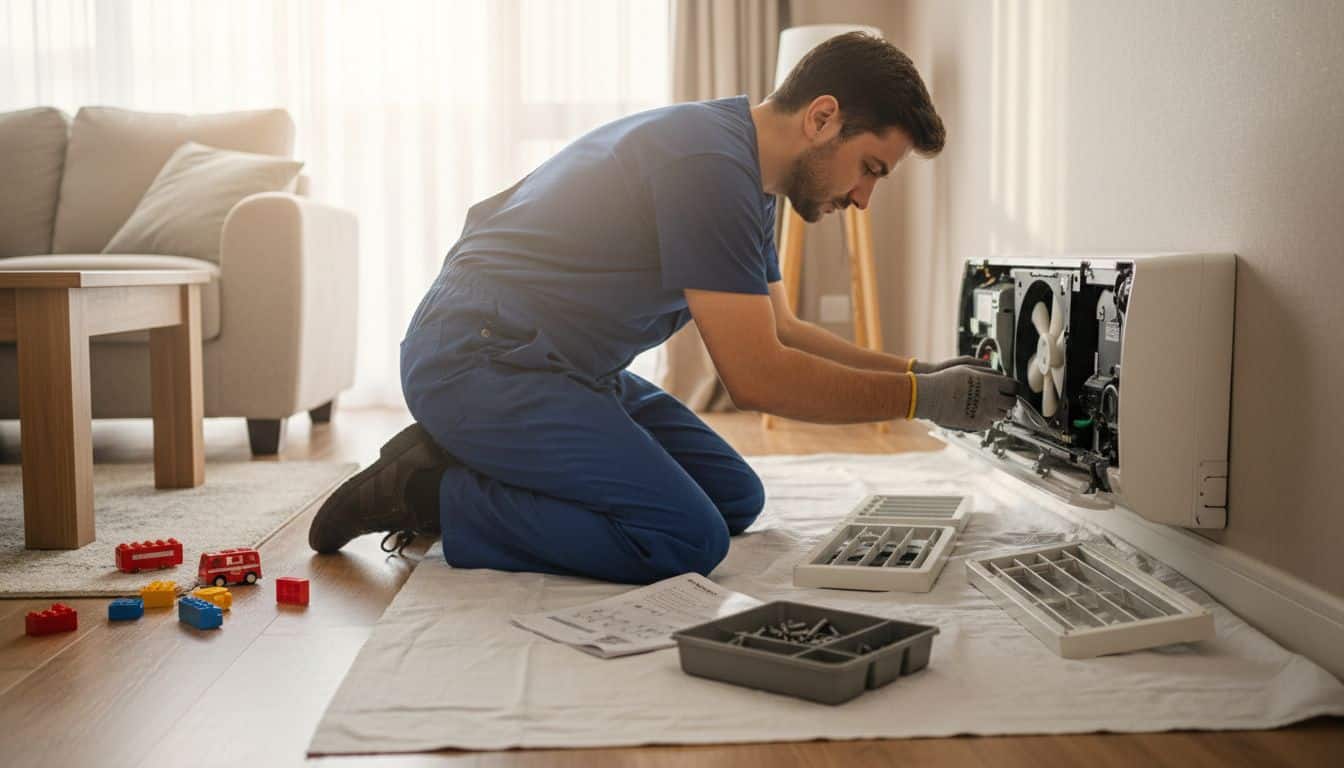
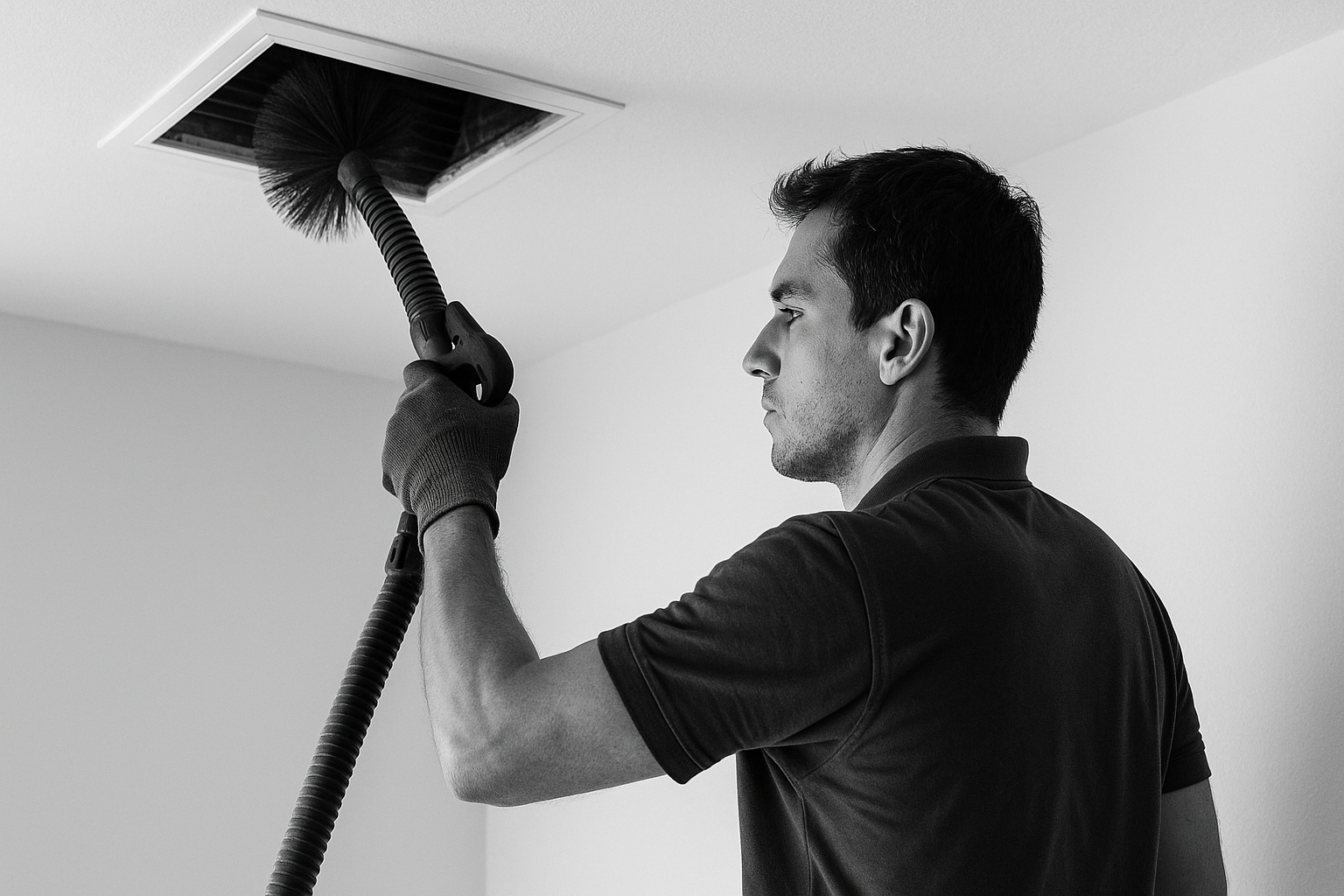

Leave a Reply